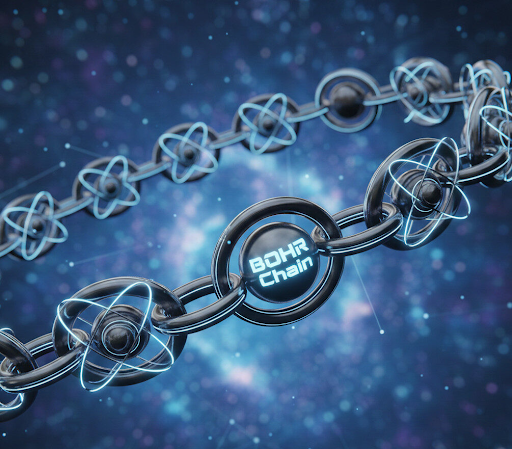Configuring CGMiner for Bitcoin mining
Bitcoin mining is the process of verifying and adding new bitcoin transactions to the blockchain - the public ledger that records all bitcoin transactions. Miners use specialized hardware called ASIC miners to solve complex mathematical problems and process transactions. Successfully solving a problem adds a new block to the blockchain and rewards the miner with newly minted bitcoins. Bitcoin is the first and most well-known cryptocurrency, but mining it profitably requires significant investment in equipment and electricity.
To start mining bitcoin, you need an ASIC miner and software to connect to the bitcoin network. CGMiner is open source bitcoin mining software that supports ASIC, FPGA, and GPU mining hardware. With careful configuration, CGMiner can maximize your mining profits and connect you to bitcoin mining pools. This guide will walk through the key steps for configuring CGMiner to mine bitcoin.
Downloading and Installing CGMiner
The first step is to download the latest version of CGMiner that supports your mining hardware. CGMiner is available for Windows, Mac, and Linux operating systems. Go to the CGMiner GitHub repository and find the latest release that matches your system. Download the compressed file and extract it to a convenient location on your computer.
Once downloaded, open the CGMiner folder. For Windows users, look for the .exe file and create a shortcut to place on your desktop. Linux and Mac users will need to open a terminal window and cd into the CGMiner directory before launching the software.
Connecting Your Mining Hardware
Next, you need to configure CGMiner to recognize your ASIC miner. Connect the miner to your computer using the provided USB or ethernet cable. Most modern miners will be recognized automatically, but you may need to install drivers provided by the manufacturer.
In the CGMiner console or configuration file, ensure the following parameters are set correctly:
--enable-mining- This enables bitcoin mining.--scan-time- Set this to the time it takes to scan for new hardware, such as 60 seconds.--usb- Use this option if connecting a USB ASIC miner.
Once connected, your CGMiner console or log file will display identified mining hardware with details like firmware version, supported mining modes, and detected chips.
Choosing a Mining Pool
For the best chance of earning bitcoin block rewards, independent miners join forces in mining pools. Pools allow miners to combine their resources to generate the hash power needed to consistently solve blocks and share in the rewards.
Some popular bitcoin mining pools include:
- Slush Pool
- AntPool
- F2Pool
- ViaBTC
Consider factors like pool fees, minimum payouts, and geographic location when choosing a pool. You can register for an account on the pool's website. Take note of your wallet address, username, and any passwords.
Configuring CGMiner with Pool Parameters
To point your CGMiner client to your desired mining pool, several configuration options are required:
--url- This is the URL for your pool, such asstratum+tcp://eu.stratum.slushpool.com:3333--user- Your username or wallet address on the pool.--pass- The password for your pool account.
You will also want to set:
--socks-proxy- Use this if connecting through a proxy.--protocol-dump- Displays low-level communications with the pool.
Once configured, CGMiner will connect to the mining pool and begin hashing with any recognized mining hardware. You're all set to start mining bitcoin!
"After some initial troubleshooting, seeing those first bitcoin rewards coming into my wallet made all the effort worth it. Mining bitcoin takes determination and patience, but the rewards can be great."
Fine Tuning Performance
To optimize earnings, careful tweakings of CGMiner settings is required for your particular mining setup. Here are some tips:
- Adjust intensities to maximize hash rates for your hardware. Too low wastes potential; too high can cause instability.
- Undervolt or underclock chips to reduce power usage and heat while minimizing impact on performance.
- Tinker with
--thread-concurrency,--lookup-gap, and--gpu-enginevalues. Find the ideal parameters through trial and error. - Monitor chip temperatures and rig stability. Optimal cooling keeps hardware at peak speeds.
Don't be afraid to thoroughly test different configurations to find the optimal CGMiner settings. Even small adjustments can accumulate to meaningful profitability improvements over time.
How can I maximize my bitcoin mining profits?
The key factors that determine bitcoin mining profitability are:
- ASIC efficiency - Newer models produce more hashes per watt of power. Upgrade when possible.
- Power costs - Cheaper electricity means greater profits. Consider locational factors.
- Bitcoin price - A higher exchange rate means mining is more profitable. Monitor markets.
- Pool fees - Pools with lower fees increase the bitcoin you keep. Comparison shop.
- Mining difficulty - This rises over time with more competition. Improving efficiency is key.
Maximizing your profits requires keeping hardware optimized, electricity costs managed, and always hunting for efficiencies.
What troubleshooting steps can I take if CGMiner won't connect?
If CGMiner is not connecting properly to your mining pool, try these troubleshooting steps:
- Double check your username, password, and pool URL are correct.
- Verify your internet connection is working and any firewalls or security software are configured correctly.
- Use the
--verboseoption and read debug logs to identify the issue. - Try servers of the same pool in a different geographic region.
- Restart your miner and computer to clear any software issues.
- Reset your router and modem to refresh internet connections.
- Recompile CGMiner from source to rule out corruption.
- Ask the pool support team if they have any recommended fixes.
With careful debugging and methodical checks, you should be able to get CGMiner properly connected and mining bitcoin.
Conclusion
Configuring CGMiner requires setting up your ASIC hardware, choosing a mining pool, entering account details, and optimizing performance. With the right tuning, you can maximize your bitcoin mining rewards over time through a stable CGMiner setup. As bitcoin gains adoption, taking the time to optimize your mining operations will provide valuable experience and potentially profitable rewards.




